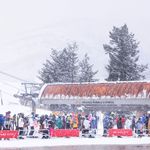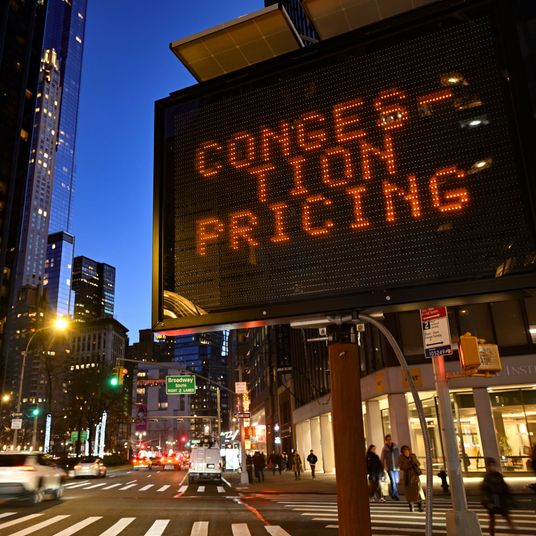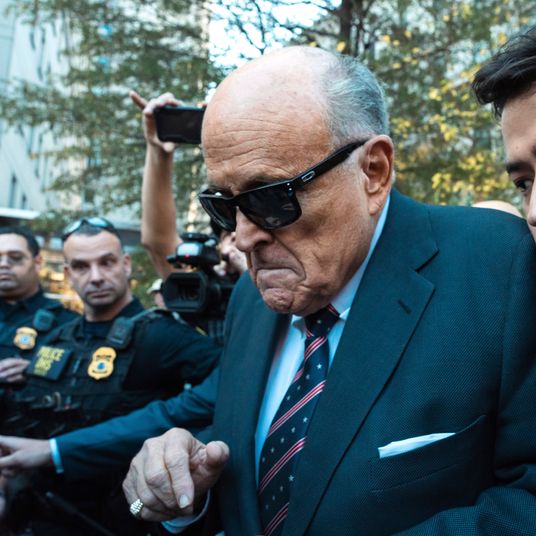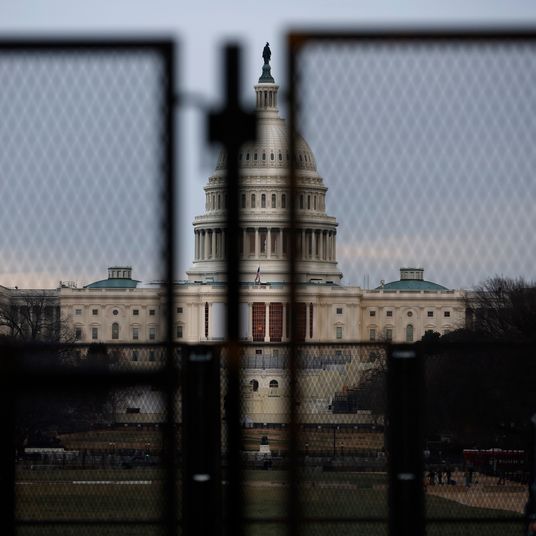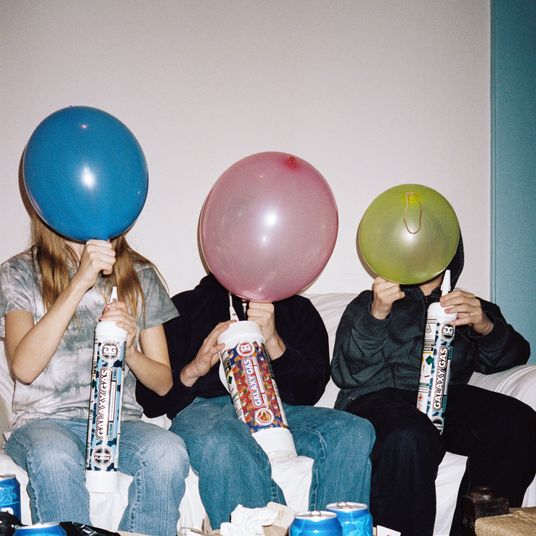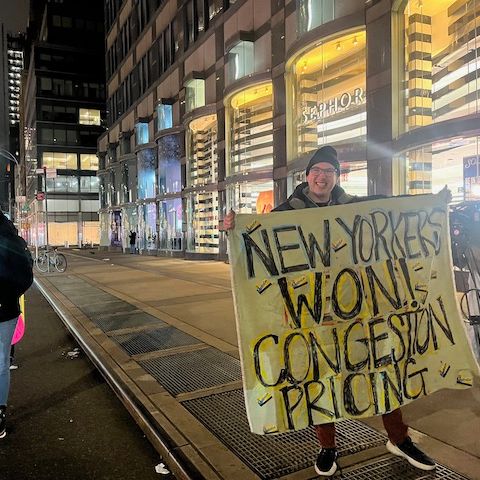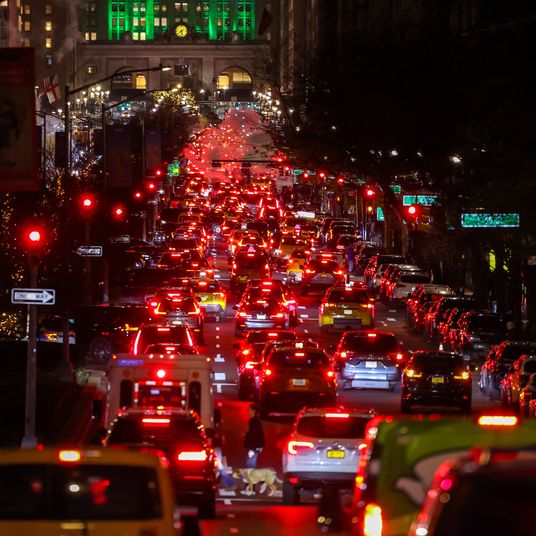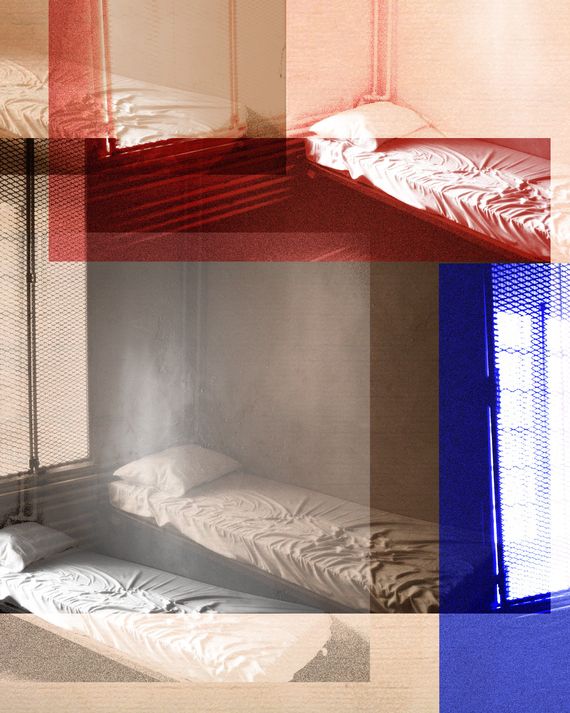
On March 14, when the coronavirus began spreading through Westchester, Sing Sing started taking preventative measures. All family visitation and access by nonessential civilians — teachers, professors, volunteers — were suspended. Cellblock gyms and religious services were closed. Mess-hall seating was staggered. Medical callouts and commissary runs were limited to groups of ten. No masks, no hand sanitizers — not yet.
To us prisoners, it all seemed like a face-saving attempt in a hopeless situation. In the yards, guys congregated on the phones, lifted weights, spotted one another, jogged. Social distancing? It was a recurring joke: bunched up on stairways and in corridors waiting to clear a metal detector; bunched up on the flats waiting for clearance to leave the cellblock for meds or bathhouse. Prisoner porters mopped floors and wiped bars with germicide, which was soon upgraded to bleach and water. It wasn’t even until the end of March, after the first prisoner had died of COVID-19, that guards were given the option to wear masks on duty. My peers wondered why guards weren’t issued masks when our visits were suspended. Some of the guards wondered too. At that point, the guards would have been the only ones bringing the virus into the facility.
On March 30, Reginald Stephen, 58, a 300-pound man with back problems who walks with a cane and has high blood pressure, was in his cell feeling feverish. He told a sergeant. Walkie-talkies crackled. Corridors cleared. A potential COVID patient was en route to the infirmary. “Walking to the infirmary, you feel a sense of doom,” Stephen told me later. “You feel like a leper.” Stephen waited in the bullpen for hours before he saw the doctor. When it finally happened, the meeting was a relief: “He treated me like a human being.” That morning, two other men with flulike symptoms joined Stephen in the clinic. None of them, at that point, knew if their symptoms were indeed those of the coronavirus.
In the meantime, prison officials, and rumors, were coming and going through the bullpen area. Juan Mosquero, a 58-year-old man who had been admitted to the infirmary a week before experiencing flulike symptoms, was the first prisoner in a New York prison to die of the virus. Others in the facility were also reporting symptoms — fever, cough, shallow breathing — and were being quarantined in the infirmary, sometimes four men to a room. Before Mosquero was found dead that morning, not one incarcerated person had been tested for the coronavirus in Sing Sing. A prisoner who worked as a porter in the infirmary said that Mosquero, holding his chest, had told him through a glass door, “I can’t breathe.”
That Monday night, an infectious-disease nurse inserted two long swabs up Stephen’s nose. On the morning of Thursday, April 2, the men in the infirmary received their test results. Seven were positive for COVID-19. Stephen was one of them. This prompted administrators to clear out a part of the prison for quarantine. That afternoon, the captain rolled up on my tier with his lieutenant and told us to pack up.
Back in 2004, after a few years on Rikers Island trying to beat the rap, I started my 28-years-to-life bid in Sing Sing. The maximum-security prison overlooks the Hudson River in Ossining, 30 miles up the river from Manhattan. Its first cellblock was built in 1825, five stories of white limestone, with no running water and no toilets. Built close to the waterfront, the conditions — dank, damp, dense — were perfect for the spread of disease. Prisoners contracted typhoid and tuberculosis. According to the New York Correction History Society, from 1891 through 1902, 50 percent of the deaths in New York prisons were from tuberculosis. In the 1930s, the original Sing Sing cellblock was condemned and newer cellblocks were built farther up the hill along with administrative buildings and an infirmary.
We were being asked to pack up, the guards told us, because the first floor of Five Block — a privileged living area of cells with windows and better ventilation, where I had been living — was being requisitioned for quarantine, essentially a covert recovery unit for men who showed signs of improvement in the infirmary, where beds were filling fast. About 30 of us were moved to A-block and B-block, where cells stretch nearly the length of two football fields and tiers stack on top of one another. B-block is the same today as it was when I came up: a sort of holdover spot — “transit,” it’s called — where men first land with brand-new bids after being processed in state prison, coming up from Rikers. They stay here a few months before a prison farther north has an open cell. Most are young gang members with long sentences and something to prove. They don’t seem to care about a virus, or social distancing, or much of anything.
Why not just keep us all locked in our cells? Locking down the prison would bring other problems. Confining the population in small cages 24 hours a day, indefinitely, is not simple. Sing Sing is an old prison. The eight-by-five-foot cells have no hot water. How would we eat? Shower? Get insulin? By law, even people punished in solitary get recreation an hour a day. About 20 percent of the population has a mental-health file. Locking down prisoners during a pandemic would panic men. And a panic attack in a cell may be the most frightening thing to experience in prison.
Baby, welcome to the party,” Pop Smoke’s words bumped over cell radios, on different tiers, tuned to Hot 97. It was early April, and I settled in on Z-gallery, in B-block. The tier is two and a half feet wide with grated metal cages clamped to the banister to prevent someone from falling or being thrown five stories to the flats. The air was stale, and the coronavirus swirled. Female Sing Sing officers stopped at hundreds of cells, took lists, pulled gates, turned keys, counted. They were cursed at, gawked at. They cleaned their hands with their own mini-bottles of hand sanitizer, tucked their hair, adjusted their masks. I asked one officer if she was scared. “Of course I’m scared. But this is my job,” she told me, as another prisoner slid by down the tier. When she turned, he looked back at her ass. “I worked a double yesterday and then went grocery shopping for my mom and left the bags on her stoop. I can’t go near her.”
On April 11, when an officer unchained B-block cell V-26, Paul Davidson learned his neighbor Tex — real name Calvin Grohoske, with whom he’d laughed and cooked and watched shows about aliens on the History and Syfy channels — had died. “I remember it was a Monday, because they were serving burgers. He didn’t go to the mess hall, and Tex always went for burgers. So I stopped in front of his cell,” Davidson told me. “He told me to get the CO, that he couldn’t breathe. That was the last time I saw him.” A few days later, two incarcerated men in Tyvek suits and masks packed up Tex’s property. Davidson sometimes wonders what happened to his friend’s body and his stuff. “His mother was his co-defendant. She’s doing time in a woman’s prison,” he told me. “I feel bad for her. I wonder if she even knows.”
At the White House–style COVID-19 briefing in the auditorium a few weeks later, Davidson asked the superintendent why the medical staff hadn’t checked on him and others who were locked up next to Tex. Wasn’t there a good chance that they had the virus too? The superintendent stuck to the script: If Davidson were feeling symptoms, he should report them to medical. Davidson believes he contracted the virus around the same time as Tex, but since his symptoms were somewhat mild, he stayed in his cell. Like I did. Like most of us did.
On April 15, when Governor Cuomo ordered all New Yorkers to wear masks in public, we in Sing Sing were getting sick, walking around barefaced. We were told to use state-issued handkerchiefs instead, a small square of white cloth that didn’t even reach around our heads. The prison shop only had a few hundred handkerchiefs. When administrators gave them to the elected prisoner reps to hand out, the reps refused and said they weren’t going to pick and choose who would get one. Administrators never came back with handkerchiefs for all. (In late April, mess-hall workers were issued masks to use while serving and preparing food.)
Mid-April was when my fever hit. When I closed my eyes, heat steamed off my cheeks and I drifted off. In 2001, I was 24, reckless and empty and dumb, selling drugs. I killed a man with whom I sold drugs and grew up in a Brooklyn housing project. I’m in my 19th year of incarceration. At Attica Correctional Facility, in 2010, about eight years into my sentence, I joined a creative-writing workshop, started publishing pieces in magazines, built a career, and a new identity — writer, journalist. It elevated my status, at least in the abstract, and I felt larger than the irrelevant life I was living. My writings, though, create conflict for other people, like the family of the man I killed. They may rightly feel that part of my punishment is the insignificant feeling that comes from living in a cell. Writer or not, the virus brought me down to size, grounded me in the specific, in my cell, focused on life’s fragility. I wondered, like I think many of my peers did, if our lives did, or should, matter. We faced our worst fear: dying in prison.
Lying on my cell bed, I sipped water and felt the cool liquid flow through my feverish body. Fighting off hallucinations of becoming a coronavirus statistic, I thought about how I could have caught COVID. It could have been the interview I did with NPR on the phone in the yard a week earlier, in a caged dugout area where 23 of us use phones that are 18 inches apart, chest to back. Here’s the irony — I may have contracted coronavirus while telling the nation about the coronavirus spreading in our prison. I thought about how the segment was edited so that it ended with me saying, “I want to live.”
It was nine at night. If I got any worse, I told myself, I’d tell the guard on the morning shift that I needed to go to medical. For several days, I’d been feeling feverish. When I woke up the next morning, I somehow felt better. If I didn’t have a fever, medical would send me back to my cell with a few aspirin. So I stayed in my cell, popped vitamins, drank green tea, ate tuna, and tossed the feed-up (a prisoner who delivers mess-hall trays to others confined in their cells) a pack of Newports to unofficially add me to the sick list for two weeks. José, a few cells down, had a fever as well. When he’d gone to medical in the morning, he was sent back and never tested because his fever dropped. The administration knew the infirmary was sending men with mild symptoms back to their cells, untested, and they were likely spreading the virus — going to the mess hall, going to the bathhouse, going to the yard to use the phone.
In my head, I kept hearing what a Harvard epidemiologist had said on the radio, that being near other infected people can increase exposure, increase my viral load, and make me worse. I didn’t want to go to the infirmary and be around prisoners with the virus. I hunkered down in my cell. One night, I cut up a summer sausage with a plastic knife, dumped the pieces into my plastic hot pot, mixed a can of chili, and tossed a piece of sausage into my mouth. It tasted like rubber. Loss of taste. I was sure I was positive.
CNN played nonstop virus coverage on the ClearTech TV that hung from my locker door. I hated it, but I didn’t change the channel. I watched Chris Cuomo in his creamy, comfy basement, explaining his symptoms, the exact ones I was feeling in my cell. Fuzzy X-rays of lungs with water in them appeared onscreen. Did my lungs look like that? Outside, 600 people in New York had died in the last 24 hours. Better people than me, I thought. They never sold drugs, toted guns, or squeezed a trigger.
Old Man Perry appeared outside my cell, unmasked, tipped the spout of his water container through my bars, and poured hot water in my bucket. He had a concoction that he sipped when he felt sick — crushed fresh garlic, mold from onions, a dab of hot sauce, and water boiled in a hot pot. Perry Ford, a 70-something prisoner, was tortured in the Attica Riot back in 1971. I read about him in Heather Ann Thompson’s Blood in the Water. He’s got a high tolerance for crisis and doesn’t like talking about the riot, or much of anything. After he left, I sat cross-legged on my bunk, counting my breaths as I began to panic. If they were over 25 breaths in a minute, I’d be in trouble — or, at least, that’s what the doctor said on NPR. I wanted fresh air. My heart bounced in my chest.
My cell neighbor asked his neighbor, a few cells down, to toss him some rolling papers and some “bacco.” The net bag landed in front of my cell. My neighbor’s knuckles tapped on the quarter-inch slab of steel that separated us and asked me to grab the bag. I pulled it through my bottom bars and then pushed it out through the top bars and met his hands. This stupid encounter distracted me from my panic attack. I hoped I hadn’t just given him the virus when our fingers touched.
Days passed, and my symptoms subsided. Tired of washing up in a bucket, I signed up for the bathhouse. At 1:30 in the afternoon, my cell buzzed open along with a couple of dozen others who signed up for the bathhouse run. We slid down five flights, cleared the metal detector, and were then held up on the flats. Waiting for “clearance” to leave the block, there were about 25 to 30 of us standing together, net bags stuffed with shower gear slung over our shoulders. Heat pumped from the pipes snaking along the wall pushed us closer to one another. No social distancing. No masks.
“Did you get that shit yet?” asked a 30-something with a smirk and a head wrapped in dreads.
“I mean, I think we all got it,” José replied. “I can’t taste shit. I ate a pack of those hot fish steaks from commissary — could have been a honey bun and I wouldn’t have known the difference.”
“Yup, you got it. Shit had me fucked up too,” said Dread-head. “Fever, scratchy-ass throat. Didn’t lose my taste though.”
“Yo, Tex kept telling that nurse at insulin check that he couldn’t breathe,” said José. “They want to wait until he’s spittin’ up blood … now he’s dead.”
On May 4, Ronald Goss was the first Sing Sing correction officer to die of complications from coronavirus. He was a gym officer in A-block. Goss, 58 years old, had a wife and family. None of my peers had a bad thing to say about Goss, which was unusual, because prison can make green hate blue and vice versa. I felt bad for Goss and his family. On May 15, Sing Sing officers gathered for a memorial. They had a ceremony, ordered takeout, and remembered Goss. Yard and mess hall were canceled. We were all locked in our cells and received a bag lunch of bologna-and-cheese sandwiches.
Not long after that, officers were offered the antibody test. A female officer told me she took the test and learned she was exposed and had the antibodies. “I guess I had it. I never felt anything,” she said.
“If you now have the antibodies, why wear a mask?” I asked.
“To make people comfortable. They look at you funny when you don’t wear one, and they’re saying you can get it again,” she said.
“Did you hear anything about us getting the test?” I asked.
“I haven’t. But they would learn a lot testing you guys. And you can donate your plasma. I donated mine.”
By early May, hand-sanitizer dispensers were installed throughout the facility — in corridors, yard entrances, mess-hall entrances. Strips of blue tape were placed six feet apart on the floors of the flats, where men congregated waiting for clearance. On a Thursday afternoon, a masked officer stopped at my cell with a big plastic bag of white masks and placed one on my bars. “All inmates are being issued masks,” an announcement crackled over the PA. “You are encouraged to wear them when you leave your cell. You must wear them when using the phone in the yard. They can save your life and others.” The cellblock erupted. Men cursed and shook their cages. It was all too late.
As May came to an end and June began, more masks were issued, but the sense of urgency had dissipated. Prisoners were being issued misbehavior reports, and locked in their cells for weeks, for not wearing their masks in certain areas. Many men I’d talked to believed — and I shared their conviction — that most of us had had it. The Five Block quarantine cells, full in April, were now empty. By July, inmates 55 and older were being tested for the coronavirus statewide. When I asked one of the Sing Sing prison doctors how it was going, he said, “So far, so good. No one has tested positive. We’re doing better in here than outside — I kid you not.”
As August approached, we were all tired of the coronavirus in Sing Sing. It was going on five months since visits were suspended, and men wanted to see their wives and children, even if they had to be masked with no contact. We went from anxiety to fear to being sick to recovering to fed up and arrogant to cavalier. Most, myself included, were tired of wrapping our faces with dirty masks, those blue Couvanda disposable masks that we had to continue wearing. I’d pick threads of fuzz off my tongue. A couple other masks were issued, but I didn’t wear them because they felt like wearing a fleece sweater on my face. Only one issued mask was light cotton and washable. One time, an officer told me that she’d read my articles, saw I mentioned how we didn’t have masks, and now that we have them, she wondered, why wasn’t I wearing mine? I told her that I believed we’d all had it and now had herd immunity.
Sing Sing seared under the heat this summer. Sweating bullets in the yard, I’d snap on my close friend, a militant mask wearer, who believed I got him sick back in April. “We made it, bro,” I’d say. “Why you still got that hot-ass mask strapped to your face — your breath must be serious up under there!”
He’d burst out in muffled laughs. “John, you’re a journalist, you ain’t no scientist. Nobody knows nothing!”
Today, Sing Sing and some of these prisons hit hard months ago find themselves with few positive cases. Assuming that’s true, prisons may be some of the first communal spaces to have achieved herd immunity, a situation in which at least 70 percent of a stable population has the antibodies and spread of the virus slows. Nobody knows how long our antibodies will last, which is why my peers and I have begun wearing our masks more diligently.
In the B-block yard, regret and fear filled the conversations I had with older guys. Stephen, the 58-year-old man who tested positive and recovered, had eight years in on a 16-years-to-life bid. Stephen is considered a persistent violent offender: He robbed to support a crack-cocaine addiction. After his second stint, Stephen left prison with a master’s degree and built a career in the field of social services. He became a supervisor at a therapeutic community. Then came the relapse on cocaine, then came the robberies. Stephen’s eyes, above his mask, narrated a story of regret and shame and fear — shame that he already blew his second chance, fear that he may not get another one.
Across the country, governors have released thousands of prisoners to protect them from the virus, but most are older, nonviolent offenders who are close to finishing their stints. On June 17, Governor Cuomo granted clemency to two New York prisoners: Freddie Harris, 61, and Juan Serrano, 58. Serrano was imprisoned with me in Sing Sing. A persistent violent offender, he had served 22 years of a 35-to-life sentence for burglary and robbery. The 12 years Governor Cuomo shaved off Serrano’s sentence likely saved his life, since he had a heart condition. I asked Serrano if he thought he’d contracted the virus. “I haven’t felt any symptoms,” Serrano told me through a white cotton mask, as we sat on a rock ledge, perched over B-block yard, a few days before he walked out of the walls a free man on July 8. “But I don’t know — you can’t get tested in here.” Serrano said he felt bad for the old-timers he left behind. “I think of the guys who’ve done less dirt than me and aren’t able to get a second chance,” he told me. “These old-timers need to be pushed out. This is overkill.”
In New York, a plan has been implemented to place prisoners 65 and older in a medium-security prison called Adirondack an hour from the Canadian border. The New York RAPP Campaign, which stands for Release Aging People in Prison, has been working with state legislators on a bill that would allow prisoners ages 55 and older who have served at least 15 years to appear automatically before a parole board. Even with a deadly virus in the air and a Democratic state government, there has been no action on this bill.
Officially, four prisoners and one guard in Sing Sing have died of coronavirus: Juan Mosquero, Calvin Grohoske, Erving Ford, Ramon Escobar, and Officer Ronald Goss. Forty-five prisoners (41 confirmed plus the four deceased) who reported severe symptoms to the clinic in March and April later tested positive. Yet those numbers are unreliable. A majority of Sing Sing’s 1,300 prisoners (the approximate population during the pandemic) say that they, like me, experienced mild-to-moderate symptoms, but none of us know for sure if we’ve been infected because of a lack of testing.
At least one name is missing from the official Sing Sing death rolls. Back in 2018, I worked alongside Leonard Carter as an aid to the mental-health unit in Five Block. Every morning, we stopped by cells and nudged guys to wake up for programs. Most were in bad shape, disheveled, with poor hygiene, living in a fog of antipsychotic meds. After a few months, I told the mental-health supervisor that the work depressed me. I left the job soon after. Carter had seen guys like me come and go over the years. He stayed the course, doing the work, being a consistent, steady hand for those very, very sick men. Carter looked forward to doing the same work when he got out.
After serving nearly 25 years for a 1996 murder in Brooklyn, Carter was granted parole in January. In the weeks following his hearing, wrapped in chains and cuffs and shackles, he left Sing Sing in a blue prison van headed for Queensboro, a prerelease facility in Queens for people returning to the community. As the van approached New York City, its buildings likely pierced the sky. Carter must have felt giddy. There he was, finally, days away from freedom. On April 14, Leonard Carter died. The DOCCS COVID-19 website indicated Queensboro had one positive case and one death. This is presumably Carter. Even though Carter is officially on the Queensboro count, to me he’ll forever be a Sing Sing guy, a man who died alone in prison, robbed by the virus, and the state, of the freedom he had earned.


